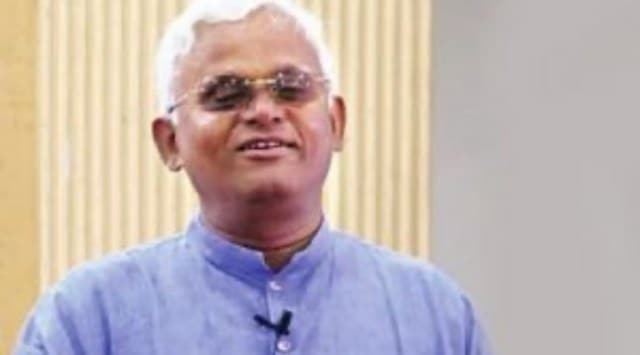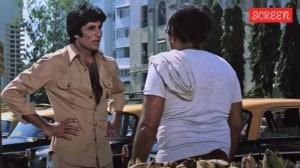Unsung Heroes: Millet man of India Dr Khadar Vali is driving a silent revolution
Engaged in reviving millets for over 20 years now, Dr Khadar Vali, 66, believes that they were part of mainstream diet for long, but were “sabotaged” in the last 75 years by corporates that marketed rice and wheat, which he dubs as “disease-causing negative grains”.
 Millet man of India, Dr Khadar Vali. (Express Photo)
Millet man of India, Dr Khadar Vali. (Express Photo) The year 2023 has been declared by the United Nations as the International Year of the Millet following a proposal by India which wants to position itself as a global hub of millets. If you think millets are getting due recognition only now, one has to thank the efforts of Indian farmers and those driving the emphasis on these cereals, such as Dr Khadar Vali – popularly known as the ‘Millet Man of India’. A Padma Shri recipient, Dr Vali is a native of Andhra Pradesh who is now settled in Mysuru.
The 66-year-old has been engaged in reviving millets for over 20 years now. Born in a poor family in Kadapa district of Andhra Pradesh, Dr Vali is an independent scientist who has undertaken several research projects in the food and health sector. While rice, wheat and milk might be staple for some, he considers them the root cause of lifestyle disorders.
The trigger point for Dr Vali to base his campaign around millets was in 1987 when he went to pursue his postdoctoral research fellowship in environmental science at Beaverton in Oregon, USA. His research involved deactivating deadly chemical substances such as dioxin at a time when food was being rapidly commercialised. However, what shocked him was when he learnt of a girl who got her period at the age of six.
“This incident actually influenced me to find out why in such an advanced country a girl is menstruating at the age of six. After thorough research, I found out that it all boils down to the food we eat, which is totally unhealthy. Milk is genetically modified, rice and wheat are not natural foods, but we have been duped by corporates to consume such food,” says Dr Vali who later went on to find out how millets can reverse the many disorders caused by rice and wheat.
The scientist recalls that in the late 1990s, nutrition experts and government bodies termed millets as ‘bird feed’ which painted a very dismal picture of their potential. Before settling down in Mysore in 1997, Vali worked in various sections of DuPont in Wilmington, Delaware in the USA for over five years.
“I resigned my job after five years after learning how people are being brainwashed to consume disease-causing products like rice, wheat and milk. When I returned to India, I toured the entire country for eight years, collecting millet seeds from old people. That is when I came across the five seeds – kodo millet, foxtail millet, green millet, barnyard millet, and little millet – that can heal and reverse diseases caused by rice, wheat and other products,” says Vali. He also bought barren land and trained thousands of marginalised farmers to grow these five seeds.
Vali believes that millets were part of the mainstream diet for long, but were “sabotaged” in the last 75 years by corporates that marketed rice and wheat, which he dubs as “disease-causing negative grains”. In the process of consuming each of these millets, he discovered that the healing properties present in them could cure even deadly diseases. Hence, he named these five millets Siridhanya, which means ‘ultimate wealth’. To cultivate them naturally, Vali propounded a method called ‘kadu krishi’ or jungle farming. In fact, Siridhanya is now being grown by several farmers across Karnataka and is generating a significant demand in the Indian and global markets.
Since 2003, he has also been treating his patients for diseases by recommending the consumption of Siridhanya, different plant/tree leaf decoctions and homeopathic medicine in dire cases at the homeopathy clinic run by his daughter in Mysore. He claims that the consumption of Siridhanya can facilitate the prevention and cure of diabetes, hypertension, obesity, constipation, piles, gangrene, triglycerides, polycystic ovarian disease (PCOD), low sperm count, skin diseases, kidney and thyroid-related disorders.
Dr Vali is also relentlessly campaigning across the country to emphasise the consumption of millets through various seminars, talks and presentations. In fact, during the pandemic, he launched his own set of cookbooks and solutions for Covid-19 patients which include the consumption of Siridhanya, homeopathic medicines and kashayas, among others. He also launched a cookbook Paka Siri, which is a compilation of recipes of all Siridhanya dishes, including sweets, snacks, savouries and other delicacies.
“If the government capitalises on the production of millet with the right policies and encourages marginalised farmers to grow more millets, India can feed the whole globe with millets. As of 2023, only 2 per cent of the world is consuming millet. However, I believe a silent revolution to consume millets has begun and in the next 30-40 years, I am sure, we will replace rice and wheat to make the human race healthy,” he says.













